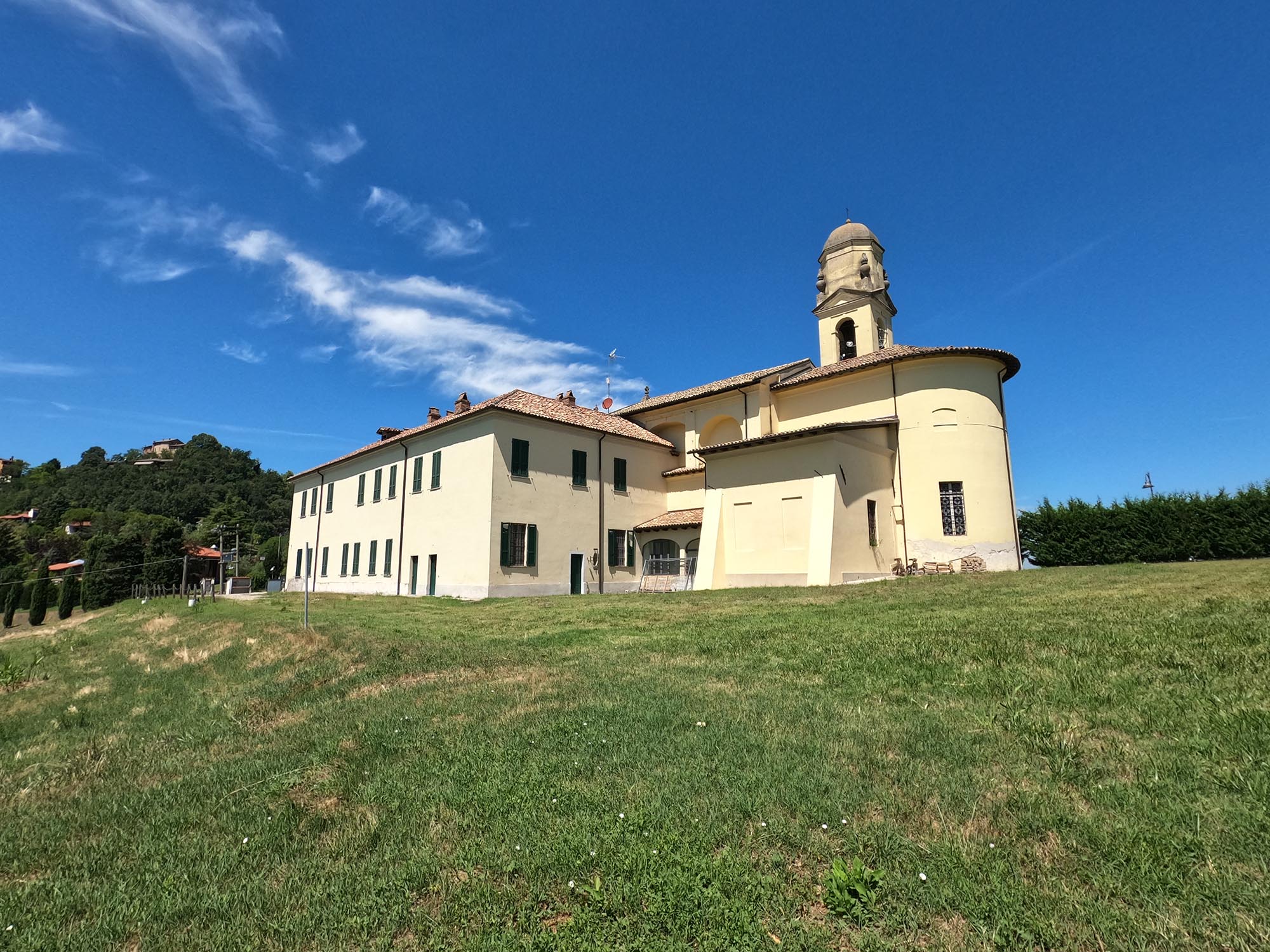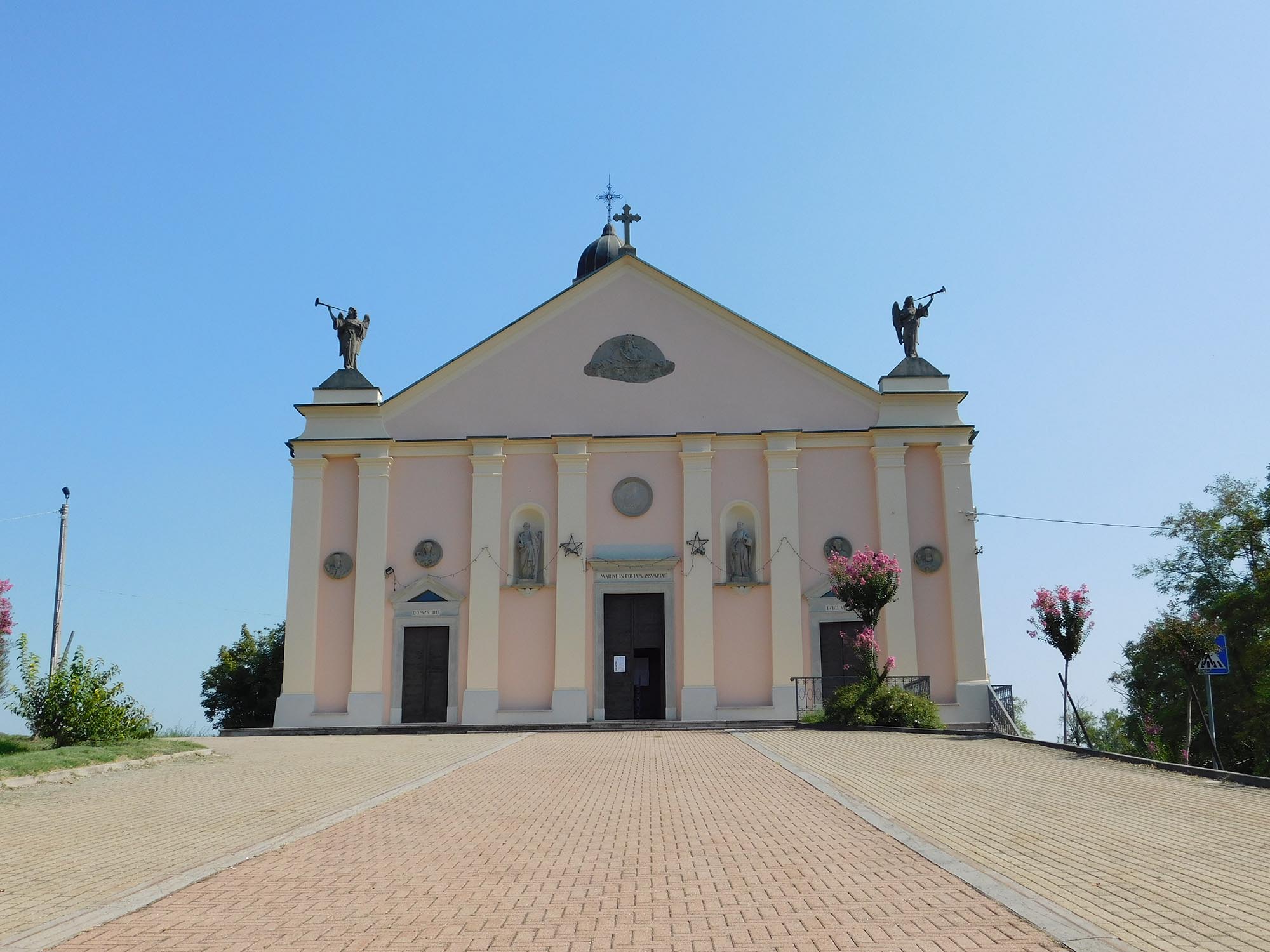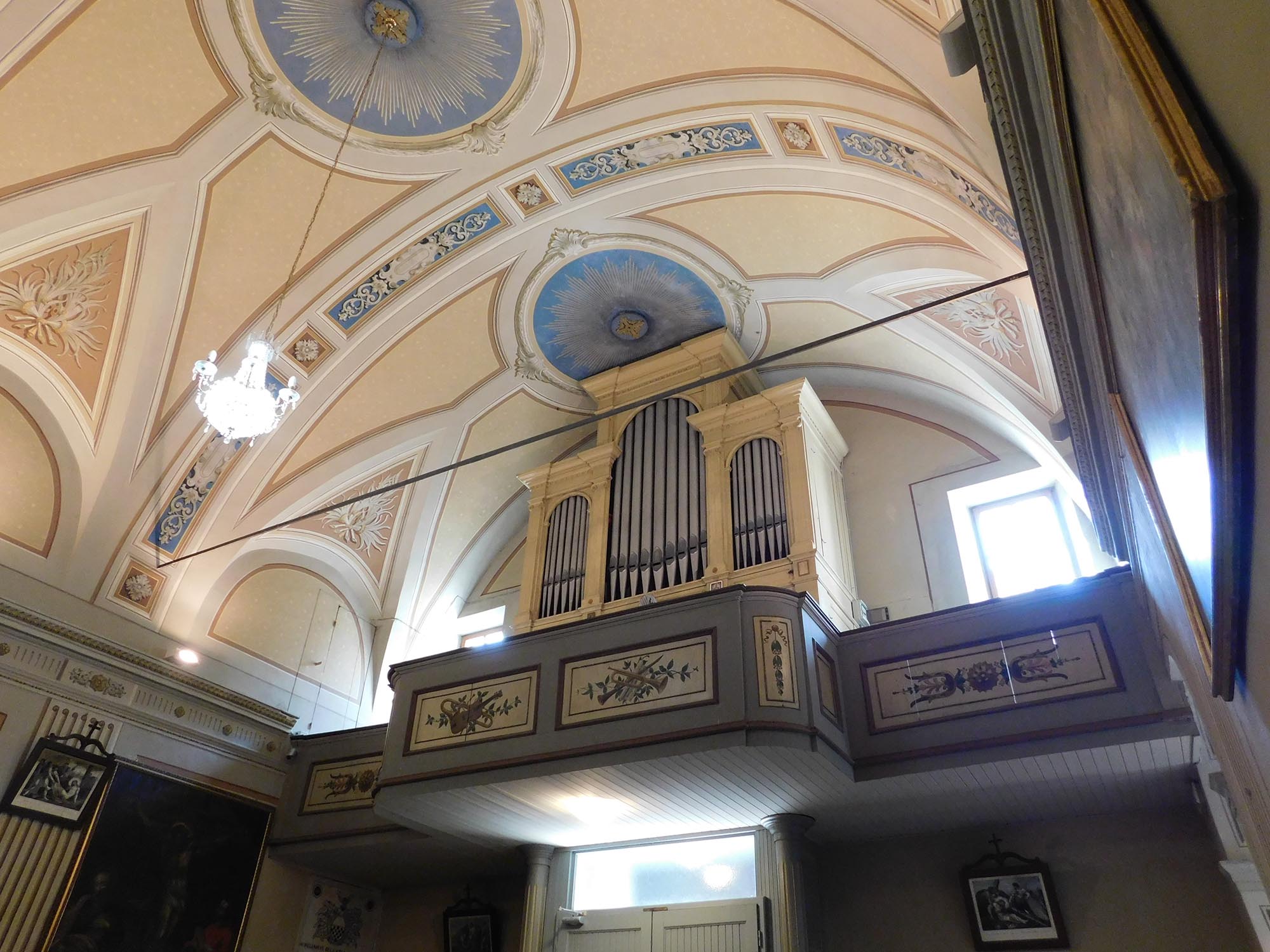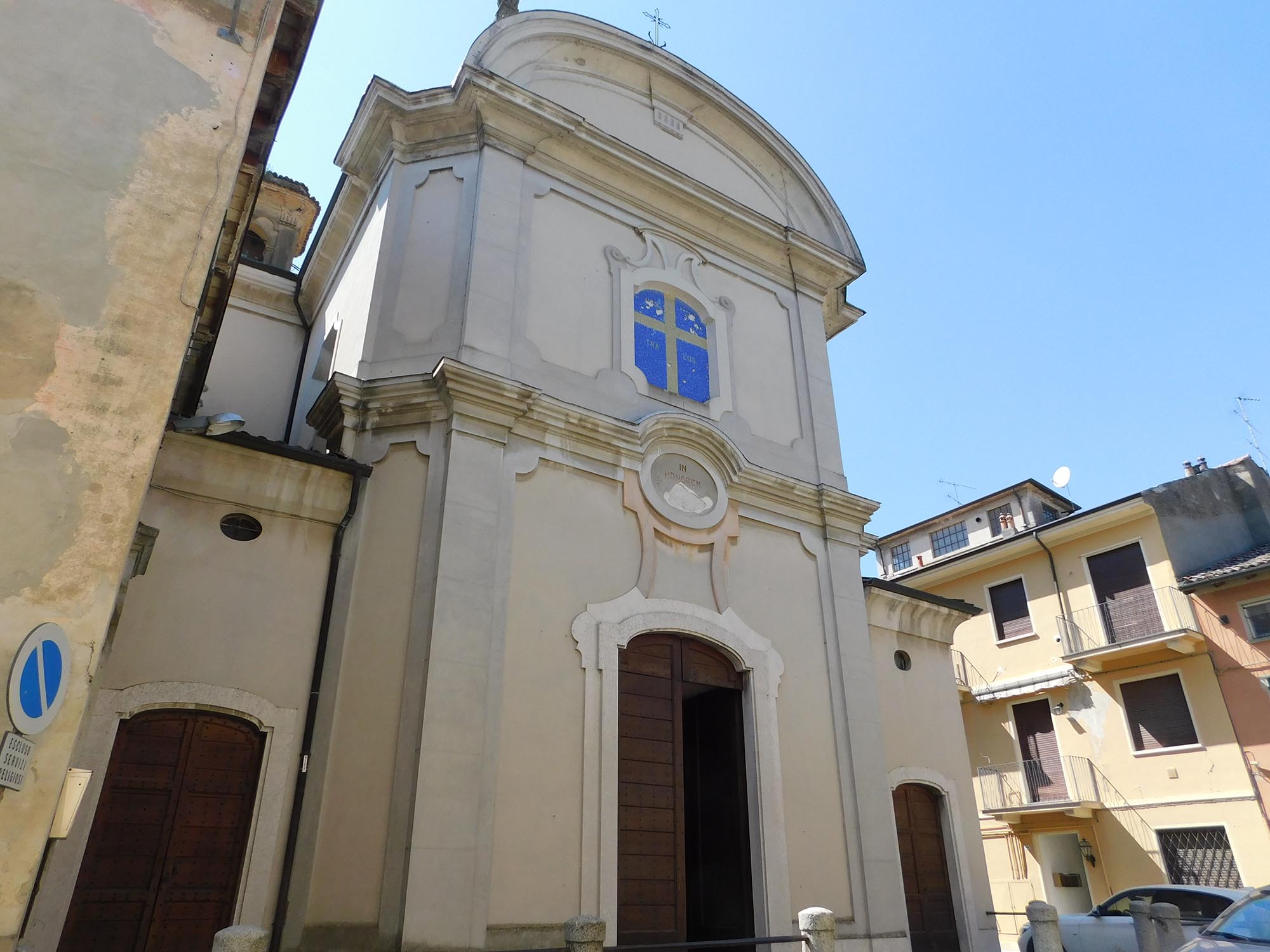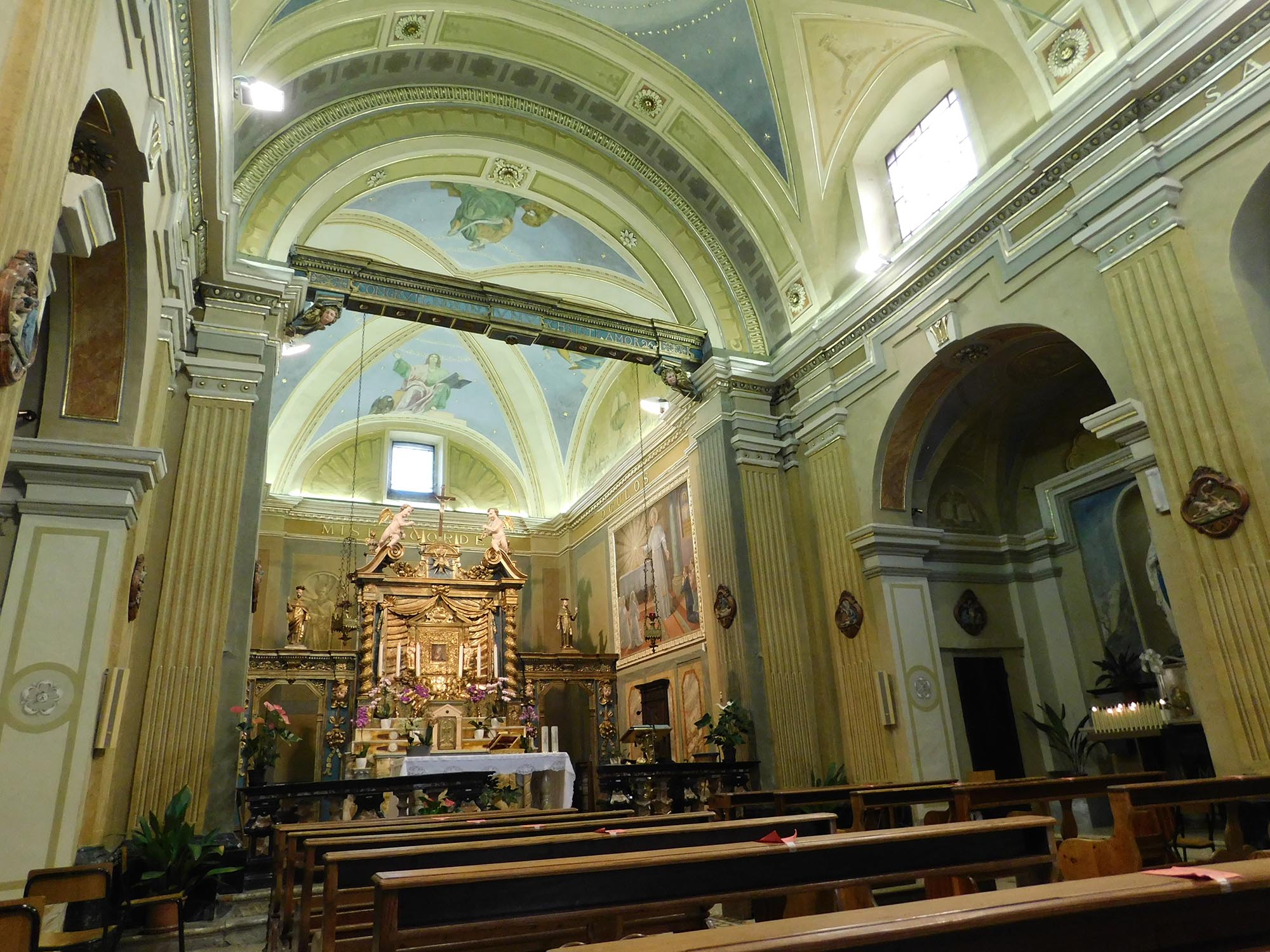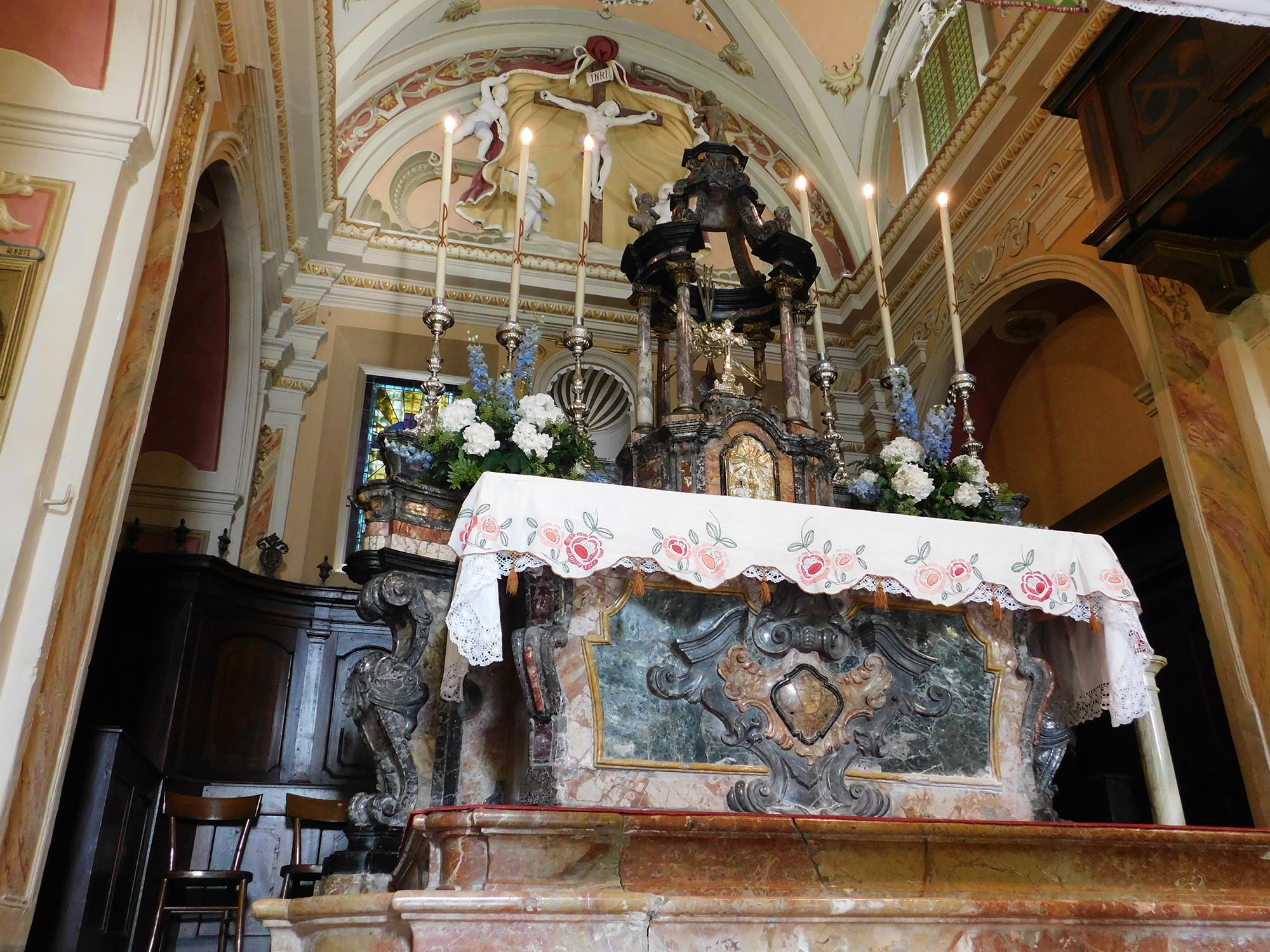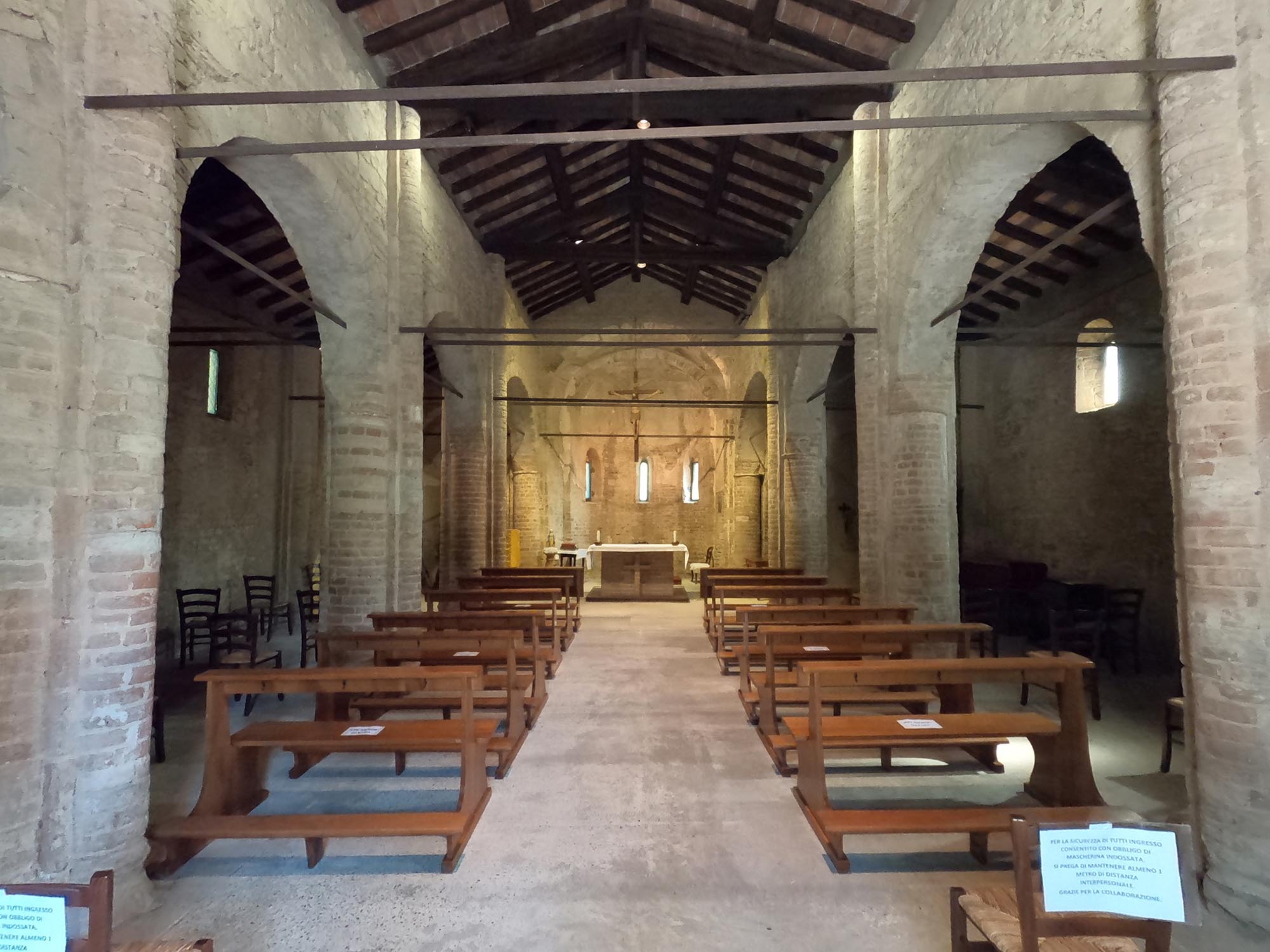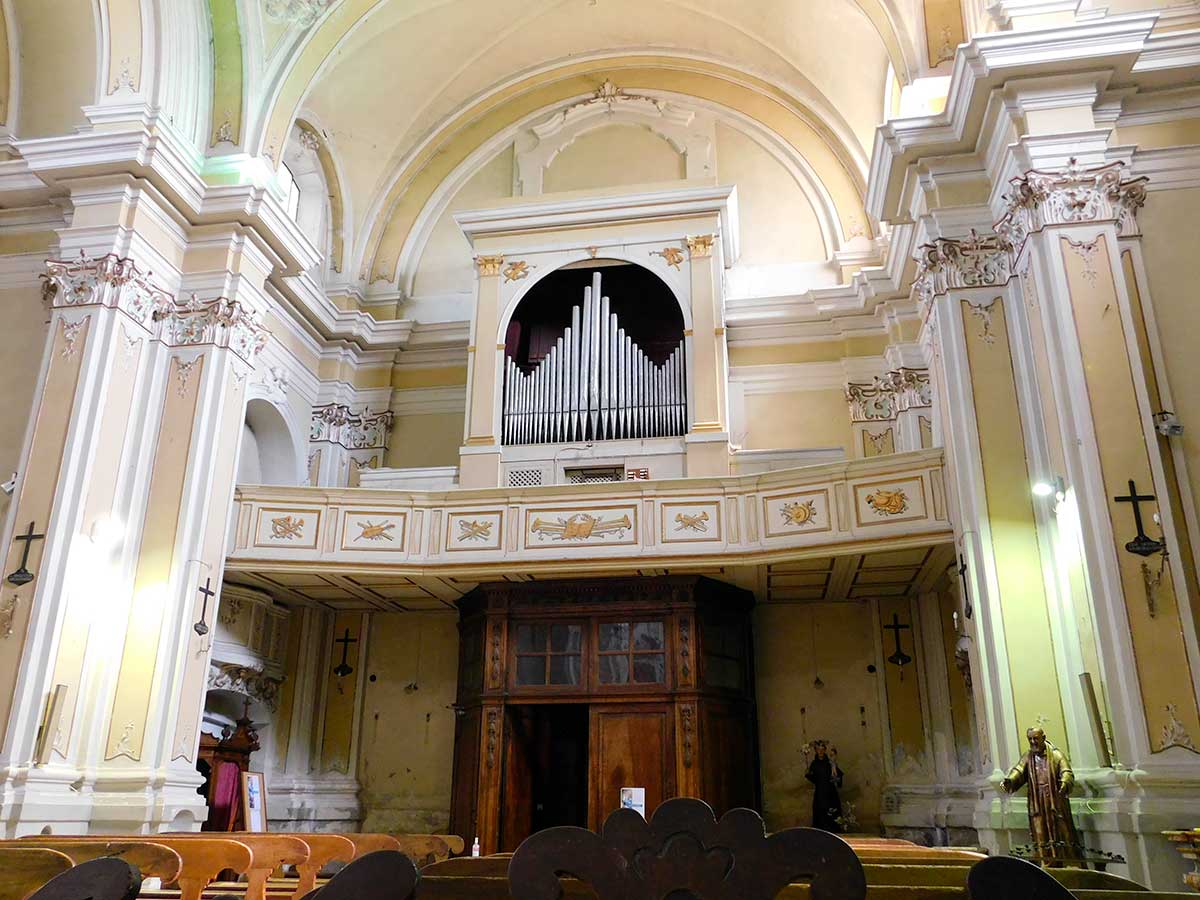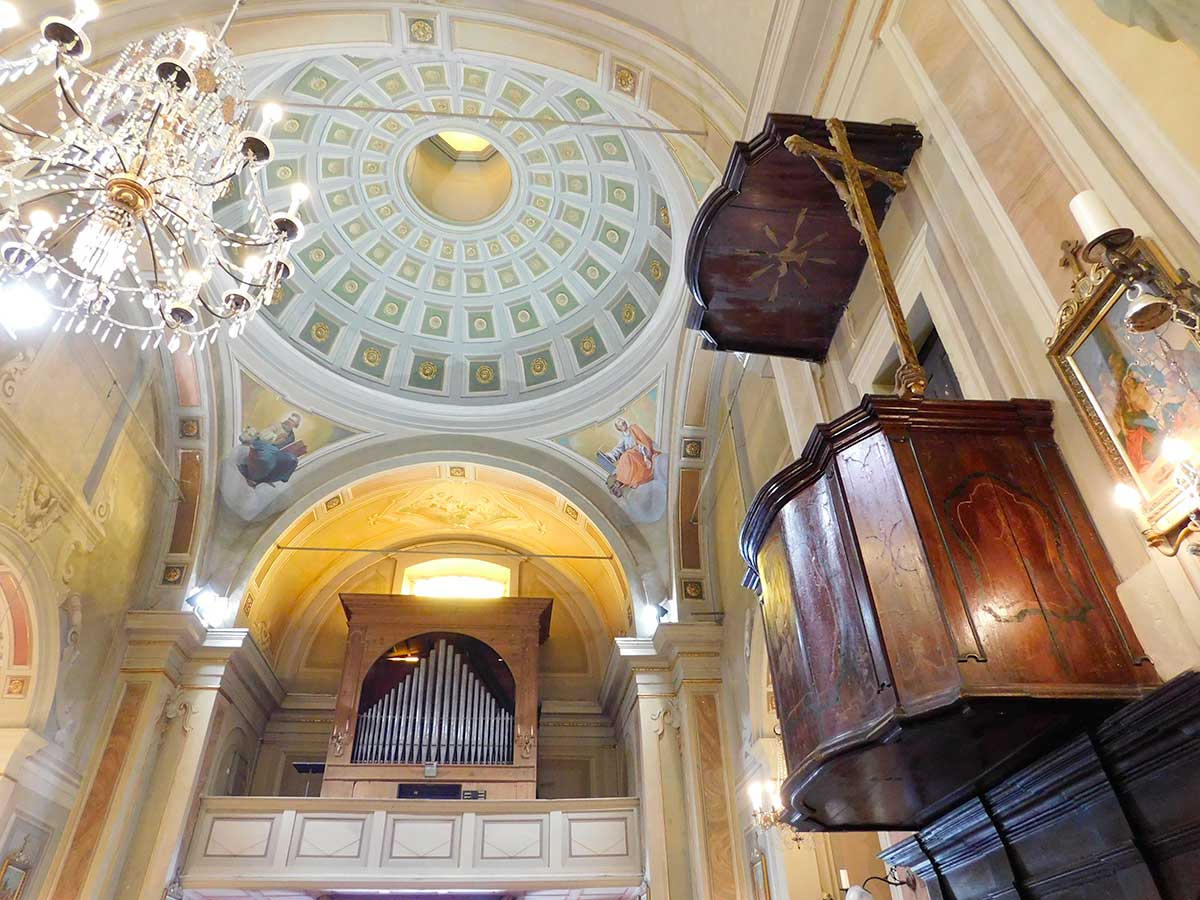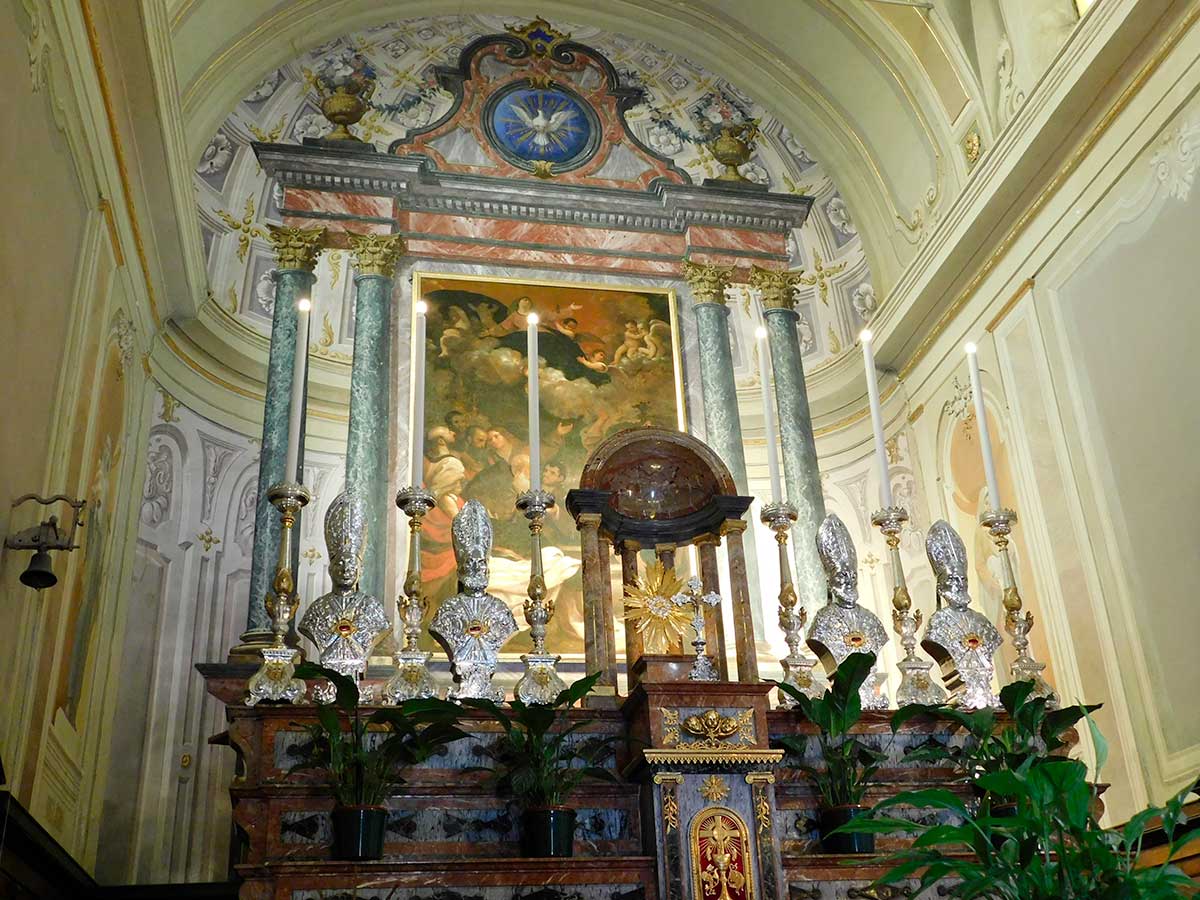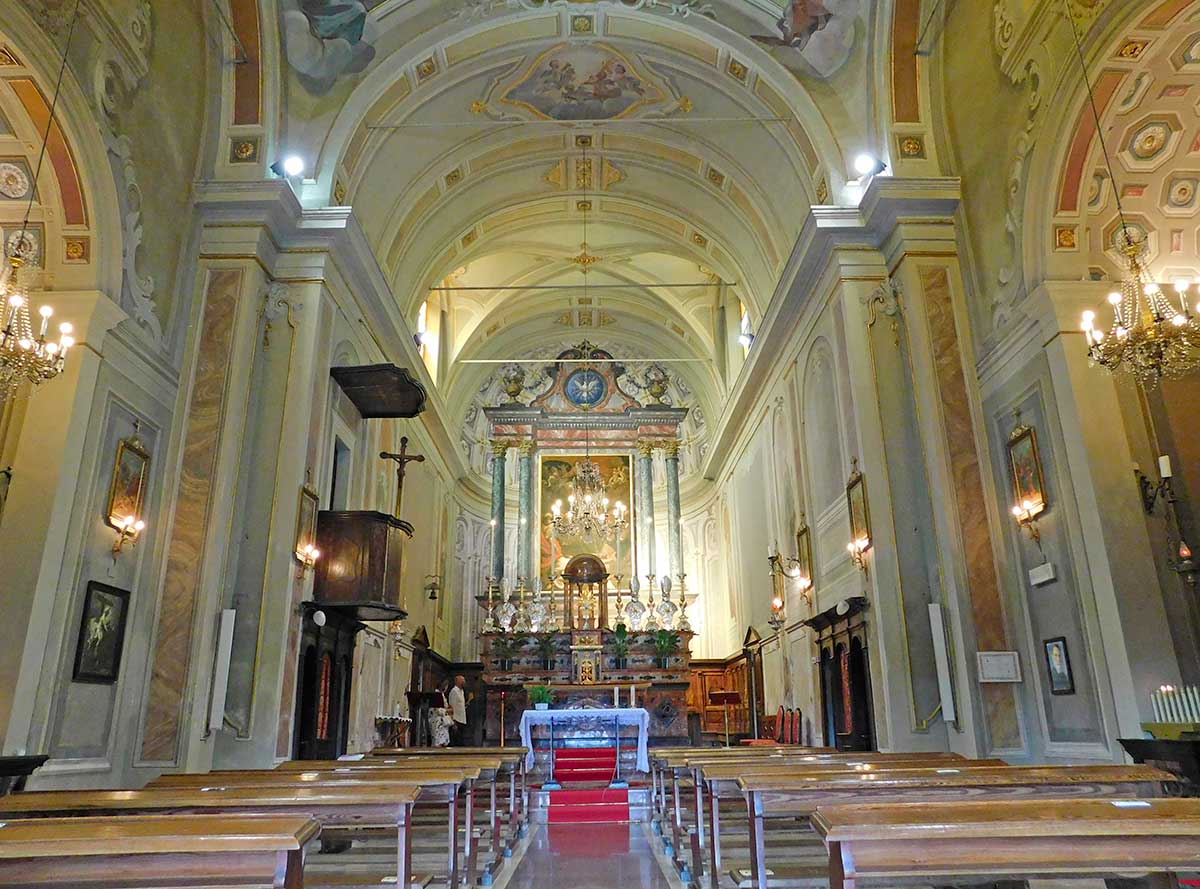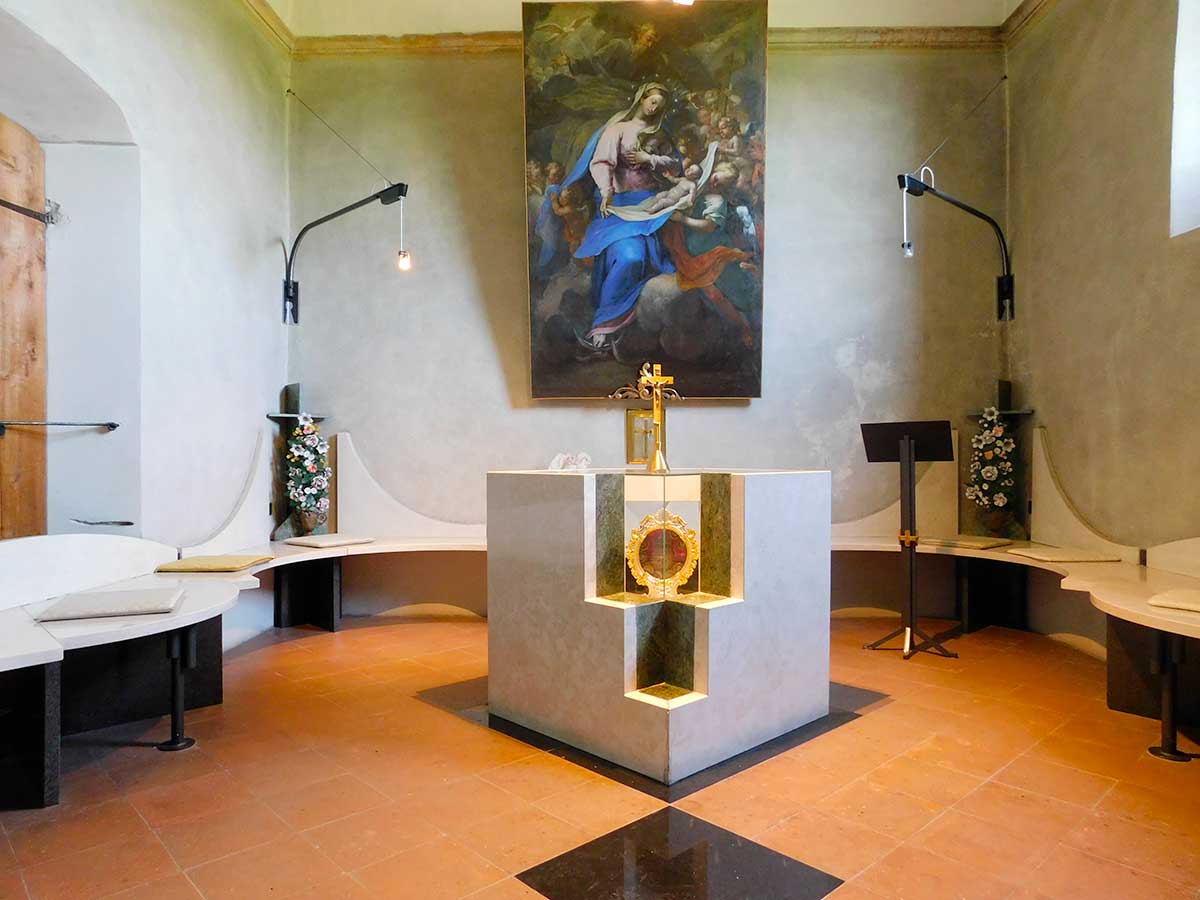Calvignano: Of interest is the complex of the church of San Carlo. It was rebuilt in 1844 on the remains of the ancient sacred building, together with the parish house and the cemetery. The village hall and the school were added at the sides in 1860. These symmetrically arranged buildings and the church form a U-shaped floor plan that delineates the square and the main public space in Calvignano. The Church of San Carlo is in neoclassical style and has a single nave. The village hall has recently been restored and features elegant interiors.
Canneto Pavese: The church of Saints Marcellino, Pietro, and Erasmo. The eighteenth-century building was erected between the years 1742 and 1826, in place of the old fourteenth-century church, which was no longer suitable for accommodating the faithful. It lacked the bell tower to crown the work, construction of which began in 1847 was finished in 1854. Inside you can admire valuable works of art and the 19th-century organ by the Lingiardi family from Pavia.
Canneto Pavese: The ancient church of Monteveneroso dedicated to San Siro is worth a visit. It houses valuable works of art. A visit to the Well of Sant’Antonio in the Monteveneroso hamlet, built in the Malaspina valley in 1511, is not to be missed. The Murales by Maestro Pietro Delfitto in Camponoce, with six panels representing the stages of vine processing, is worth seeing. It was designed to honour all the winemakers of the Oltrepò Pavese.
Castana: The parish church of Sant’Andrea Apostolo, probably built before the year 1000 by the monks of San Colombano di Bobbio. Originally with a single nave, it was enlarged with the construction of the two side aisles between 1840 and 1850. The enlarged facade of the church was completed in the early 1900s. Inside the church there is a valuable organ made by the Serassi brothers from Bergamo, well-known exponents of the Lombard organ school. Among the paintings on display, “Deposition” from 1700 and another of greater value from the seventeenth century, depicting Saint Charles Borromeo, are worth admiring. Other valuable works of sacred art can also be seen.
Cigognola: In 1623, at the express request of the Visconti Scaramuzza family, Pope Urban VII erected the church of San Bernardo Abate, located a short distance from the fortified wall of the castle. It is assumed that it already existed in the 14th century during the dominion of the Sannazzaro nobles. The church contains valuable works of art such as the 18th-century oil altarpiece of the Blessed Virgin of the Holy Girdle, depicting the Virgin with angels and saints.
Codevilla: In the hamlet of Pontazzo, we find the Oratory of the Beata Vergine (Blessed Virgin). The church is mentioned in a document dating from 1299, but its origin is older. Inside, you can admire the valuable cycle of frescoes in the apse dating back to the 14th century. Near Pontazzo, you can see the spectacular natural calanques embedded in a unique natural environment.
Golferenzo: The evocative church of San Nicola di Bari. The view towards the plain from the churchyard is spectacular. The whole of this church is rather beautiful and elegant; it rises above a charming square surrounded on all sides by a boundary wall, which helps to improve the appearance of the place and give greater prominence to the building. Inside, you can admire notable works of sacred art.
Lirio: The parish church of San Paolo is the 17th-century reconstruction of a previous church bearing the same name. Inside, you can admire various valuable works of sacred art.
Montalto Pavese: The 16th-century parish church dedicated to Sant’Antonino is of interest. Inside, you can admire various valuable works of art.
Montalto Pavese: At the Costa del Vento, it is worth visiting the little chapel of the Madonnina, a destination for numerous tourists and paragliding enthusiasts. You can enjoy a unique view of the plain and the Apennines that shape the region.
Montebello della battaglia: The church of Saints Gervasio and Protasio and the monastery of Montebello were under Benedictine control until 1484, when the Girolamini (Order of Saint Jerome) arrived. Today, the Palazzo Dal Pozzo, a former convent, is privately owned. The monastery underwent some reconstructions which were completed in 1666. The rebuilding of the new church began in 1668 thanks to the commitment of the Montebello local, Abbot Floriano Marcellini, General of the Order of Saint Jerome. The official inauguration took place in 1675. Inside, you can see important sacred furnishings and works of art.
Montescano: Of interest is the Sanctuary of the Madonna di Caravaggio, recently built in 1941. The parish church underwent a radical restoration to preserve it in 1983. The slender bell tower has a simple shape. Inside, you can admire beautiful works of sacred art by the Alexandrian artist Vignoli.
Montù Beccaria: In the historic centre of the village, there is a splendid church, which was erected in the parish under the name of San Michele Arcangelo in August, 1303, by Boniface VIII, on the order of Count Manfredi Beccaria. The church of San Michele became an archpriest church in 1638. The brotherhood of disciples was established in the parish church of San Michele. Inside you can admire notable works of sacred art.
Mornico Losana: In Mornico, you can also admire the parish church dedicated to Saints Cosma and Damiano, where a 16th-century painting depicting the Madonna and Child between St. Joseph and St. Rocco with the dog is preserved. The apse houses an altar in polychrome marble. The chancel behind it, on the other hand, dates from 1700. Along the entire upper section of the presbytery, a series of lunettes depict scenes from the daily life of Saint Luigi Orione in his first agricultural colony founded in Mornico Losana. Finally, an 18th-century piece of furniture positioned in the sacristy is of exquisite craftsmanship.
Oliva Gessi: The parish church is dedicated to San Martino Vescovo and was built around the year 1000 and rebuilt in the 17th century. It houses three interesting late 17th-century paintings, a wooden statue of the Blessed Virgin from the fourteenth century, and a statue of San Luigi Versiglia. The “Salita dei Martiri” (martyrs’ steps) in front of the church door was erected in honour of the Salesian Saints Luigi Versiglia and Callisto Caravario.
Pietra De’ Giorgi: Construction of the Parish Church of S. Maria Assunta in Castagnara began in 1295, on the orders of Meteliano Massimo Orsini following the miraculous healing of his only son, which took place after the Blessed Virgin appeared in the chestnut wood that was located where the church now stands. Inside, there are valuable frescoes by Rodolfo Gambini.
Pietra De’ Giorgi: Near the Church, you can see the Oratory of the Beata Vergine Addolorata (Our Lady of Sorrows) built in the 17th-century and used as an auxiliary church to accommodate the large number of faithful and as an ossuary. The Oratory was restored in the late seventies, although it was not possible to restore the beautiful Byzantine vault.
Redavalle: In around 1560, the parish church of San Martino was abandoned and the archpriest took up residence in the church of Saints Rocco and Martino in Redavalle. The church is located in the historic village centre. It was enlarged at the beginning of the 18th century according to a design by the architect Veneroni, up to the present-day factory, and masterfully restored in the last decade of the last century. It houses remarkable works of art and a magnificent organ with a balcony richly decorated in gold and stucco. Built with a longitudinal plan, the interior represents the typical baroque conception in which space is represented as a single whole and light plays a fundamental role.
Rocca De’ Giorgi: The first thing you see is the silhouette of the bell tower of the church of San Michele Arcangelo, rising above the surrounding landscape of lush green hills. From documents found, we know it already existed in the 12th century; over the centuries it has undergone numerous alterations, until it assumed its present form. The small church with a single nave is currently being restored.
San Damiano del Colle: The parish church dedicated to Saints Cosma and Damiano is worth visiting. It was erected in 1658. Inside, you can admire various valuable works of art. In 1820, the parish of San Damiano al Colle included 195 families, totalling 823 people, of which 643 took communion, 714 were confirmed, and 119 were Confirmation candidates.
San Damiano del Colle: In the hamlet of Villa Marone, near the nineteenth-century church of San Carlo Borromeo, there is an interesting depiction of the Grotto of the Madonna of Lourdes, visited by numerous pilgrims and tourists.
Santa Giuletta: The ancient parish church dedicated to the martyr Santa Giulitta stands in the oldest part of the Castello hamlet. It has been enlarged and renovated several times, with a bell tower in the shape of a crenelated tower. Giulitta was a Christian noblewoman, for which she died as a martyr with her son in 304 in Tarsus, Cilicia, during the Diocletianic Persecution. Devotion to the saint was brought to Italy by Roman colonists or soldiers. Inside the church, you can admire valuable works of religious art.
Santa Maria della Versa: The Church of Santa Maria del Carmine in Soriasco is part of a monumental complex composed not only of the church, but also of the bell tower and the rectory. The hall has a nave with three arches with deep side chapels, with a transept and presbytery with a rectangular apse. Inside you can admire valuable works of art. Near the church stands the old Palazzo Favarelli, built in the 19th century and still privately owned.
Santa Maria della Versa: The municipality owes its name to the image of the Madonna Annunziata, now restored and kept in the parish church, which has been venerated by the inhabitants since 1300. Tradition has it that this image gave rise to a miracle. In 1639, it was decided to build the current parish church dedicated to the Holy Name of the Virgin Mary. The church is a Marian shrine mentioned in several prestigious publications dedicated to religious tourism. The church houses valuable works of sacred art.
Stradella: The basilica of San Marcello in Montalino, an important Romanesque monument built at the end of 1100, is well worth visiting. The apses with the typical arches are noteworthy. The original structure is preserved inside. You can also admire fragments of the ancient frescoes that adorned it.
Stradella: The seventeenth-century parish church is dedicated to Saints Nabore and Felice. It houses remarkable works of sacred art.
Torrazza Coste: The Church of Sant’Antonino is the oldest in the area and in the whole Diocese of Tortona. The first residential nucleus of the ancient hamlet dates back to the 7th century. The church is dedicated to S. Antonino, a Roman soldier who died as a martyr on the 4th July, 304 AD. The crumbling primitive church was demolished and part of the material was used for the construction of the new one in various phases, completed in 1584. The church is in Romanesque style and has a single nave. Worthy of note are the sacred furnishings found inside. There is a funerary stele from 1245 in the sacristy.
Torricella Verzate: The Church of Santa Maria already existed in 1511. The Sanctuary of the Passion was begun in 1764 and completed in 1770. The new church therefore stands on the area occupied by the ancient fortified structure; it has no foundations since it was built on the bare stone, as were the 14 Stations of the Cross, completed in 1781. The Sanctuary is in the shape of a Greek cross. From the main entrance, you can see the richness of the friezes and the main marble altar. The organ was built by the renowned Lingiardi brothers. Worth of note are the various artistic works that adorn the interior. To the side of the presbytery, there is a room recently converted into a small adoration chapel..
Torricella Verzate: Outside the Sanctuary are the Stations of the Cross that depict the events of the Passion of Christ. The chapels are arranged symmetrically and contain life-size statues, as well as bas-reliefs and paintings. The ancient cemetery or contagious disease hospital was located between the tenth and eleventh Stations of the Cross. Today, this room houses a memorial to those who died at work.
Zenevredo: The church of San Vincenzo is well worth a visit; it dates back to the mid-eighteenth century, but retains traces of the ancient complex in the rear part of the presbytery and sacristy, where walls made from local stone and bricks can be traced back to the previous Romanesque structure. The façade was rebuilt in 1871 and is now divided into three parts with cornices and decorated with panels, ending in a triangular pediment. The portal is surmounted by a late Baroque-inspired medallion. Various valuable works of sacred art are preserved inside.


